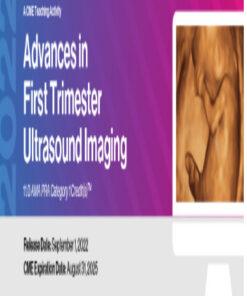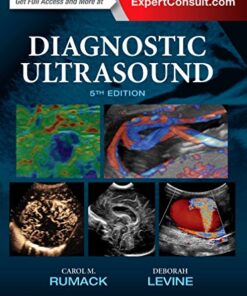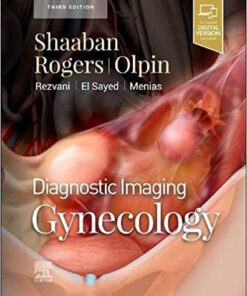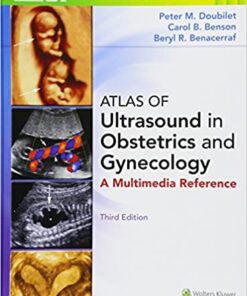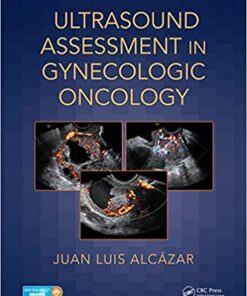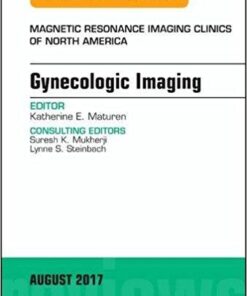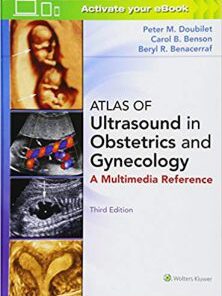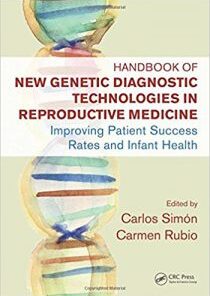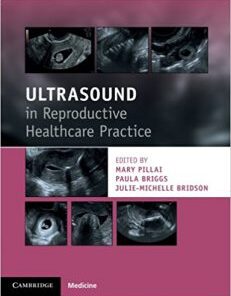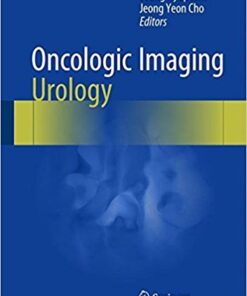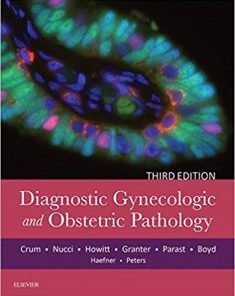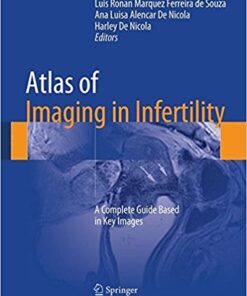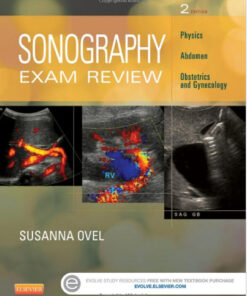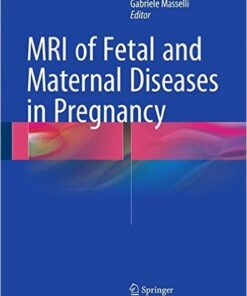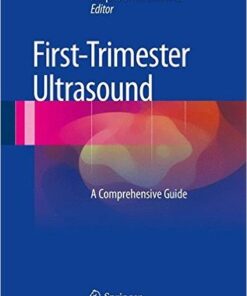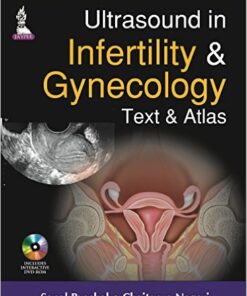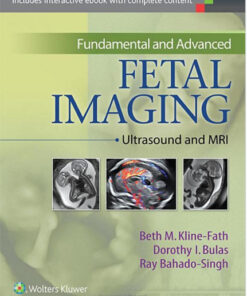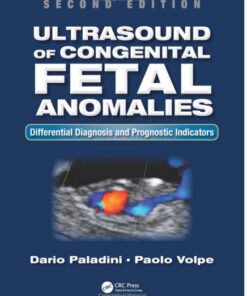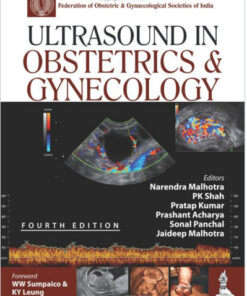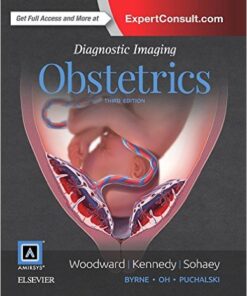The Importance of Obstetrics and Gynecology Imaging in Women’s Health
Obstetrics and gynecology (OB-GYN) imaging plays a critical role in the diagnosis and treatment of a wide range of women’s health issues. From prenatal care to menopause, OB-GYN imaging is used to evaluate the female reproductive system and provide detailed information to guide treatment decisions.
GYNECOLOGY/ OBSTETRICS BOOKS
2022 Advances in First Trimester Ultrasound Imaging (CME VIDEOS)
OBSTETRICS & GYNECOLOGY IMAGING
Diagnostic Ultrasound, 2-Volume Set 5th Edition & PDF ORIGINAL & VIDEO
OBSTETRICS & GYNECOLOGY IMAGING
OBSTETRICS & GYNECOLOGY IMAGING
Atlas of Ultrasound in Obstetrics and Gynecology Third Edition PDF
OBSTETRICS & GYNECOLOGY IMAGING
OBSTETRICS & GYNECOLOGY IMAGING
Pre-Obstetric Emergency Training: A Practical Approach 2nd Edition PDF
OBSTETRICS & GYNECOLOGY IMAGING
Basics of Abdominal, Gynaecological, Obstetrics and Small Parts Ultrasound 1st ed. 2018 Edition PDF
OBSTETRICS & GYNECOLOGY IMAGING
Ultrasound Assessment in Gynecologic Oncology 1st Edition PDF
OBSTETRICS & GYNECOLOGY IMAGING
OBSTETRICS & GYNECOLOGY IMAGING
Textbook of Female Sexual Function and Dysfunction: Diagnosis and Treatment PDF
OBSTETRICS & GYNECOLOGY IMAGING
Atlas of Ultrasound in Obstetrics and Gynecology, 3rd Edition PDF
OBSTETRICS & GYNECOLOGY IMAGING
Breast Cancer Diagnostic Imaging and Therapeutic Guidance PDF
OBSTETRICS & GYNECOLOGY IMAGING
Handbook of New Genetic Diagnostic Technologies in Reproductive Medicine PDF
OBSTETRICS & GYNECOLOGY IMAGING
OBSTETRICS & GYNECOLOGY IMAGING
Fleischer’s Sonography in Obstetrics & Gynecology, 8th Edition PDF & VIDEO
OBSTETRICS & GYNECOLOGY IMAGING
OBSTETRICS & GYNECOLOGY IMAGING
Diagnostic Gynecologic and Obstetric Pathology, 3rd edition PDF
OBSTETRICS & GYNECOLOGY IMAGING
Atlas of Imaging in Infertility: A Complete Guide Based in Key Images 1st ed. 2017 Edition PDF
OBSTETRICS & GYNECOLOGY IMAGING
OBSTETRICS & GYNECOLOGY IMAGING
Managing Ultrasonography in Human Reproduction 2017 : A Practical Handbook
OBSTETRICS & GYNECOLOGY IMAGING
OBSTETRICS & GYNECOLOGY IMAGING
Sonography Exam Review: Physics, Abdomen, Obstetrics and Gynecology, 2e 2nd Edition
OBSTETRICS & GYNECOLOGY IMAGING
Callen’s Ultrasonography in Obstetrics and Gynecology, 6e 6th Edition
OBSTETRICS & GYNECOLOGY IMAGING
MRI of Fetal and Maternal Diseases in Pregnancy 1st ed. 2016 Edition
OBSTETRICS & GYNECOLOGY IMAGING
First-Trimester Ultrasound: A Comprehensive Guide 1st ed. 2016 Edition
OBSTETRICS & GYNECOLOGY IMAGING
OBSTETRICS & GYNECOLOGY IMAGING
Fundamental and Advanced Fetal Imaging: Ultrasound and MRI First Edition
OBSTETRICS & GYNECOLOGY IMAGING
OBSTETRICS & GYNECOLOGY IMAGING
OBSTETRICS & GYNECOLOGY IMAGING
Obstetrics and gynecology imaging involves a variety of imaging modalities, including ultrasound, magnetic resonance imaging (MRI), computed tomography (CT), and X-rays. Each of these modalities has its unique advantages, allowing healthcare providers to obtain the most accurate and detailed images of the female reproductive system.
Ultrasound is one of the most commonly used imaging modalities in OB-GYN care. It uses high-frequency sound waves to create images of the uterus, ovaries, and fetus during pregnancy. Ultrasound can detect problems such as ectopic pregnancy, ovarian cysts, and uterine fibroids.
Magnetic resonance imaging (MRI) is another imaging modality used in OB-GYN care. It uses a strong magnetic field and radio waves to produce detailed images of the female reproductive system. MRI can detect conditions such as endometriosis, adenomyosis, and uterine and ovarian cancers.
Computed tomography (CT) is a non-invasive imaging modality that uses X-rays to produce detailed cross-sectional images of the body. CT scans can detect abnormalities in the uterus, ovaries, and other structures in the pelvis.
X-rays are used less frequently in OB-GYN imaging, but they can still be helpful in certain situations. For example, they may be used to evaluate the position of an intrauterine device (IUD) or to detect bone abnormalities in the pelvis.
In conclusion, OB-GYN imaging plays a crucial role in women's health care. Healthcare providers use a variety of imaging modalities to evaluate the female reproductive system and guide treatment decisions. If you have any concerns about your reproductive health, talk to your healthcare provider about whether imaging may be appropriate for you.
Top 10 best books OBSTETRICS & GYNECOLOGY IMAGING
- Ultrasound in Obstetrics and Gynecology: A Practical Approach by Edward I. Bluth
- Obstetric Imaging: Fetal Diagnosis and Care by Joshua Copel
- Gynecologic Imaging by Hedvig Hricak and Janet E. Bailey
- Diagnostic Imaging: Obstetrics by Paula J. Woodward and Anne Kennedy
- Ultrasonography in Obstetrics and Gynecology: A Practical Approach by Carol Rumack
- MRI of the Female Pelvis by Valeria Panebianco and Francesco Arrigoni
- Gynecologic Ultrasound: A Problem-Based Approach by Beryl R. Benacerraf and Beverly G. Coleman
- Fetal Medicine: Basic Science and Clinical Practice by Charles H. Rodeck and Martin J. Whittle
- Radiology Illustrated: Obstetrics – Normal and Problem Pregnancies by Luigi Grazioli and Stefano Guerriero
- Pediatric and Adolescent Gynecology: Evidence-Based Clinical Practice by Julia Zachary and Sara C. O'Hearn.

